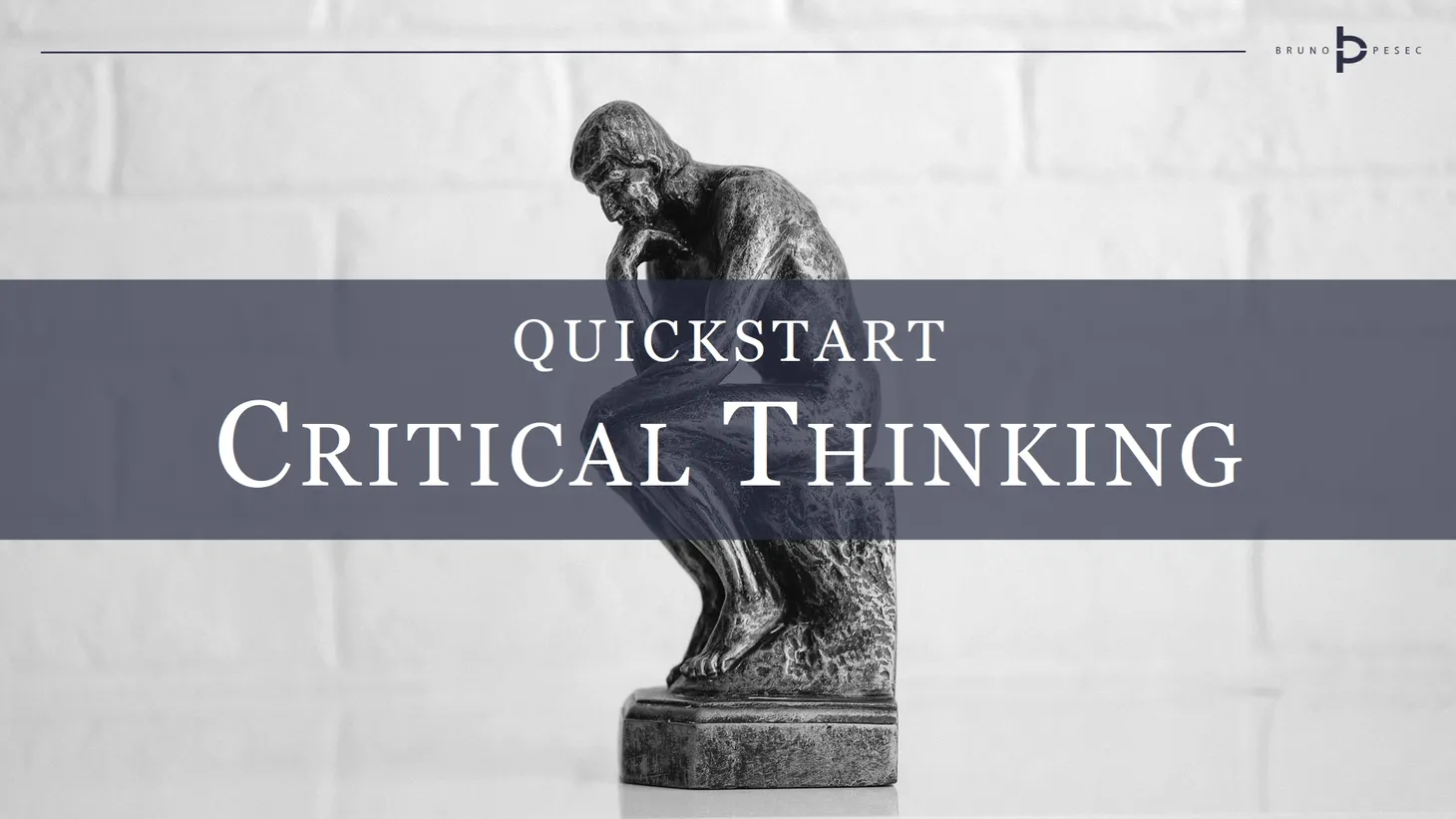Improve your thinking to avert bad decisions
Four simple steps for improving your decision making skills.

Bad decision usually result from a concoction of ignorance, laziness, poor thinking, negligence, and arrogance. In most cases they also lead to poor results, but not always, hence reinforcing poor thinking they resulted from.
You can improve your the quality of your decision making by following four simple and inexpensive steps:
- raise your awareness of common logical fallacies and cognitive biases which lead to poor decisions,
- visualise objects of discussion or decision,
- ensure safe space for candid and respectful feedback, and
- proactively question your thinking.
Awareness
First step is to become aware of signs of bad thinking – logical fallacies and cognitive biases. Former are mistakes and flaws in reasoning, latter are cases when we consistently see the reality differently than it objectively is.
I've covered these topics extensively:
- webinar recording on avoiding stupid decisions,
- blog posts on logical fallacies, and
- blog posts on cognitive biases.
Watch the webinar and make notes – which fallacies and biases resonated the most with you? Which one do you remember committing last? How did the thinking manifest? What was the outcome? How can you catch yourself next time?
Take your notes to practice and use them next time you are making a decision or having an argument. Are you seeing and hearing anything that seems overly fallacious or biased? Can you match it? Can you respond to it? Remember that it is both about your, and your peers' thinking.
Re-watch the webinar, read posts, take new notes, notice more, reflect more, act more, think better...it's a never ending journey to self-betterment. (OK, no need to re-watch the webinar too many times.)
Visualise
Abstract things can be represented tangibly. Words can be used to paint images.
If you can make your thought process more tangible it'll be easier to look at it with a critical eye. One easy way to do so is to either write it down or draw it.
That way you've created an object of discussion – something that can be inspected, questioned, shaped, reshaped, and scrapped – either alone or with a team.
Let's say that you are thinking about launching a new product.
You have many thoughts around product development, go to market strategy, securing appropriate resources within the organisations... You decide to sketch a product roadmap, draft beachhead market, and make a list of key stakeholders.
You do it quickly, in less then an hour. You have visualised, manifested, your thinking. Now you can revisit it with a critical perspective – does this make sense? Is everything connected? How does it flow logically? What is missing? Who is missing?
You can also take it to a peer and ask for feedback, seeing if it makes sense to them.
Psychological safety
Everybody has an ego. Everything has a context.
As you raise your awareness and improve your thinking it might become more and more tempting to start calling out people on their poor thinking and decision making.
In most cases people will not be too happy with that, unless there is a culture and atmosphere of candid feedback. They might feel like you are attacking them, or have a personal agenda.
Developing and maintaining safe discussion spaces is difficult. It takes everybody to build them, but only one person to crush them.
Being candid and direct is not the same as being aggressive and derogatory. Notice the difference between your decision is stupid or your arguments are dumb and your proposed decision seems weak because your arguments don't seem to support it.
My suggestion is that you start by raising your awareness, and focus on improving your thinking first, leading by example, and inspiring others.
You can also do it as a team activity, discussing it openly together. Just don't resort to tribalism and go after other teams with your newly found superior thinking.
Proactive discipline
Studying logical fallacies and cognitive biases, visualising our thinking, and creating candid feedback spaces is not something that most of us do naturally.
You'll have to work to improve your thinking and increase quality of your decision making. Three steps I've outlined above are simple and free, but require consistency and discipline, something that many lack.
I've provided you everything you need to get started. I've kept it simple and concise on purpose. If you'd like advanced materials you can email me, but please don't do that to justify your procrastination.
Start today. Continue tomorrow. That's all it takes.
Bruno Unfiltered
Subscribe to get the latest posts delivered right to your inbox. No spam. Only Bruno.




